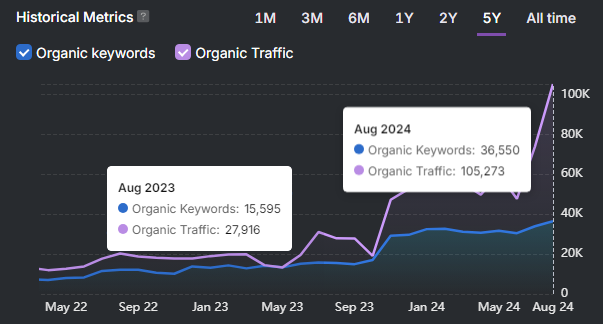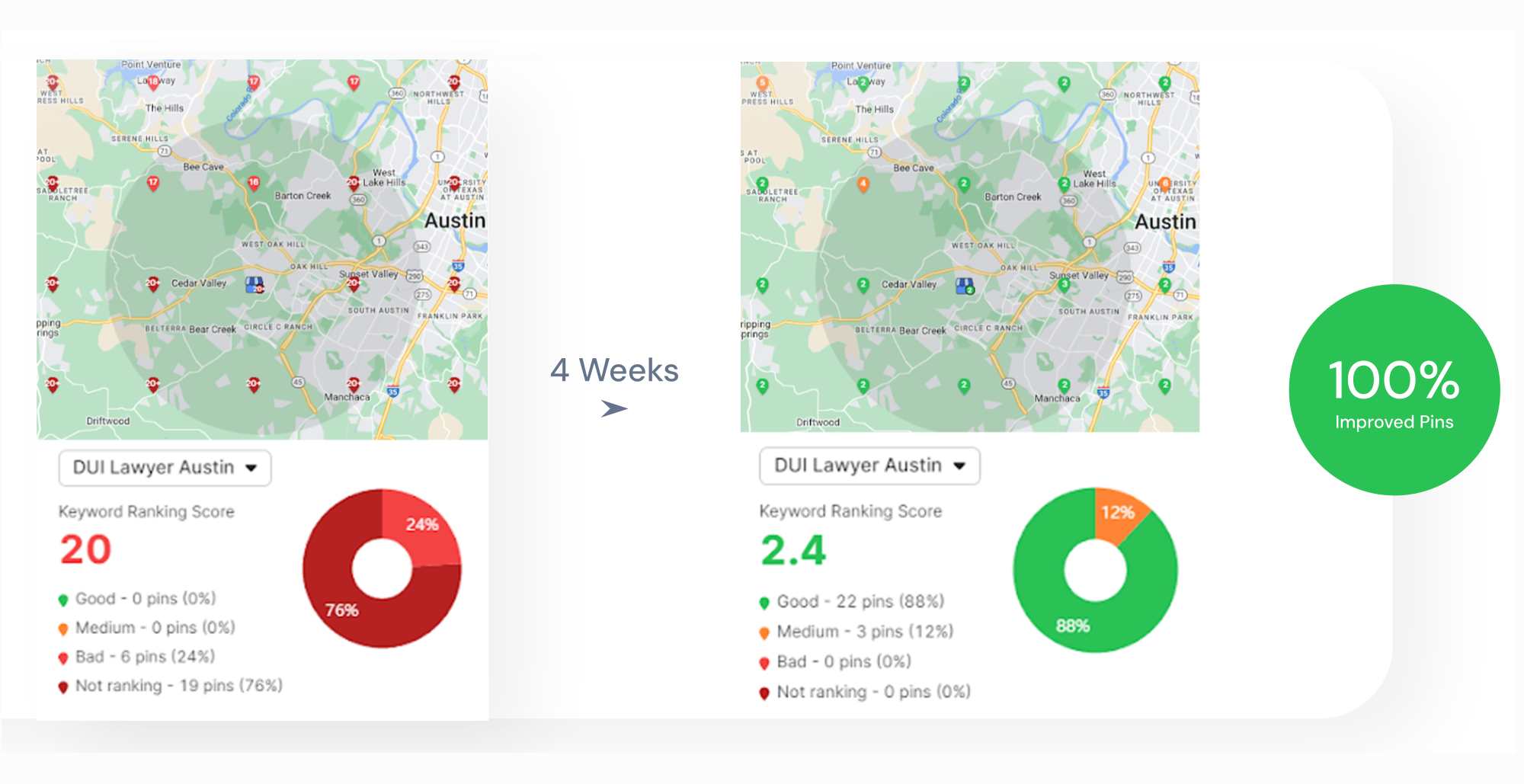Tracking a press release means monitoring its performance after distribution. This process collects data on media placements, audience engagement, website traffic, backlinks, and lead generation. Each press release demands effort, and tracking ensures that work produces measurable outcomes. It reveals how far the message travels, how readers respond, and what impact the release drives. Without tracking, every campaign runs blind, wasting time and missing opportunities.
Press release tracking brings clear benefits. It measures ROI, confirms media coverage, and uncovers audience sentiment. Live links, traffic spikes, and social metrics provide hard proof of success or failure. Teams use this data to refine messaging, improve timing, and select better channels. Tracking turns public relations into a strategic, data-driven effort that supports SEO, branding, and sales.
What is a Press Release in SEO?
A press release in SEO is a digital asset built to boost visibility, earn backlinks, and strengthen authority. It supports both public relations and search engine optimization by combining news value with keyword strategy. Press releases follow a structured format, include relevant search terms, and link to credible sources. This approach helps brands rank for target queries and appear across trusted domains.
Search engines index press releases as fresh, relevant content. Distribution through established media networks expands reach and generates referral traffic. This process increases organic presence and increases the site authority to search engines. A well-executed press release influences brand visibility and strengthens digital credibility.

What is the Purpose of a Press Release?
A press release distributes official news while strengthening credibility and expanding digital reach. Businesses announce product launches, events, strategic changes, or milestones to maintain consistent messaging across all media. This format supports branding efforts by delivering clear, authoritative information to public audiences.
Press releases function as content marketing tools. Optimized for search and structured with multimedia, they attract journalists, prospects, and search engines. Frequent publication increases authority and visibility. Organizations that issue regular press releases gain more citations and build stronger reputations.
How Effective Are Press Releases in 2025?
Press releases remain one of the most effective methods for improving digital visibility, building authority, and generating media coverage in 2025. Their role in brand communication continues to grow alongside the evolution of search and media platforms.
Recent data shows a 275% increase in reach from digital distribution compared to traditional channels. 68% of businesses report improved visibility from press release campaigns. 44% of media outlets now rely more heavily on press releases for content sourcing.
How to Track Press Releases in 9 Ways?
There are 9 ways to track press releases. The 9 ways of tracking press releases are listed below.
1. Define Key Objectives and KPIs
Set clear performance targets before distribution. Focus on measurable outcomes such as media mentions, website traffic, social media engagement, lead generation, and keyword ranking shifts.
Example: A B2B SaaS company aims to generate 20 qualified leads and 10 media mentions from a product launch release. The marketing team tags URLs with UTM codes and tracks CRM entries with source attribution.
2. Monitor Media Coverage
Use monitoring tools to track where your press release appears. Evaluate each mention based on sentiment, domain authority, and relevance to your audience.
Example: A logistics company announces a strategic merger. Media monitoring reveals 18 reprints, including high-authority mentions in Transport Topics and FreightWaves, with 11 classified as positive coverage.
3. Track Website Traffic
Insert UTM parameters into every press release link. Use Google Analytics (GA4) to measure user behavior, time on site, bounce rate, and conversion events.
Example: An AI startup shares its funding announcement through a press release. Within 48 hours, GA4 shows a 40% increase in site traffic and a 60% lift in average time on page from UTM-tagged traffic.
4. Assess Social Media Engagement
Monitor likes, shares, mentions, and comments across platforms. Track which networks generate the most traction and observe audience responses to key messaging.
Example: A food tech brand posts its press release about a plant-based product launch on Facebook. The post receives 1,800 shares, 2,500 reactions, and dozens of influencer mentions within 72 hours.
5. Analyze Key Performance Indicators (KPIs)
Compare campaign results to your pre-set KPIs. Review engagement, leads, media hits, and SEO outcomes to assess performance and refine future strategies.
Example: A travel tech platform publishes a press release about a new booking feature. The campaign hits all benchmarks: 12 media features, 8 backlinks, and a 15% lift in organic branded searches.
6. Measure Reach and Impressions
Calculate total impressions across platforms. Focus on unique readers and exposure from high-authority placements to evaluate campaign saturation.
Example: A biotech firm distributes a research breakthrough press release. Combined analytics show 650,000 total impressions across industry journals and science news networks.
7. Track Lead Generation and Conversions
Identify how many leads, sign-ups, or sales result from the press release. Use CRM systems and submission data to trace conversions back to the release.
Example: An edtech company includes a signup CTA in its press release. Within one week, the team records 300 demo requests directly attributed to the campaign.
8. Calculate ROI
Compare total campaign cost to measurable outcomes like leads, revenue, or traffic. Strong ROI confirms effective messaging and strategic value.
Example: A fitness equipment brand spends $1,500 on press release distribution. Sales data links $12,000 in revenue to traffic from press placements, delivering an 8x ROI.
9. Use the Right Tools
Combine analytics, media monitoring, and distribution platforms to centralize performance data and accelerate insights.
Example: A fintech company monitors mentions and uses Search Atlas Report Builder for full performance reports. The combined insights reveal which press release gained the most traction and why.
After submitting a Press Release using Search Atlas Press Release Distribution tool, use the main dashboard to follow each step of the distribution process. The “Status” column provides real-time updates on every release.
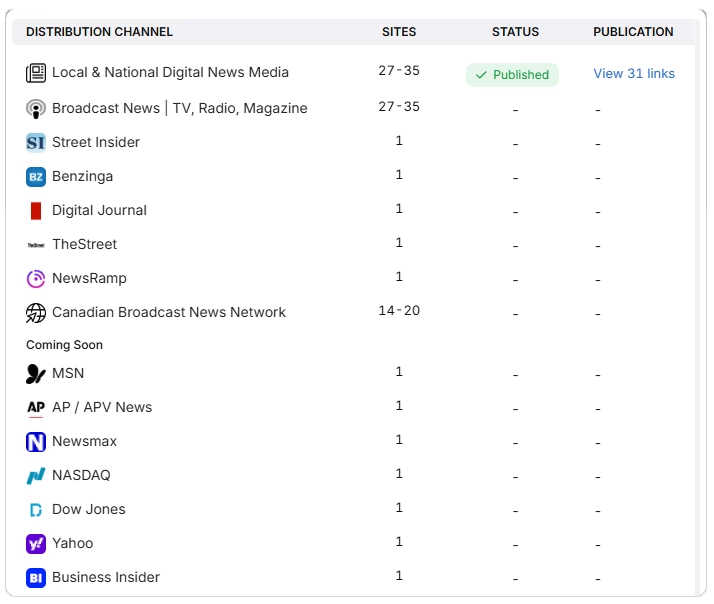
Select “View Status” to check distribution progress. This view displays how many channels have received the content and which platforms have published it. Track rollout in one place without switching tabs or tools.
Once distribution completes, “Published” appears in the Status column. Access all live URLs directly from the dashboard. Review placements instantly, confirm coverage, and share links with clients or teams.
For drafts or paused campaigns, use “Publish Content”. Resume from the exact point of interruption. Avoid delays, complete submission, and keep your campaign on schedule.
How to Track the Effectiveness of Press Releases in Your Website?
There are different ways to track the effectiveness of press releases in a website. The different ways to track the effectiveness of press releases in a website are listed below.
Track Traffic and Engagement
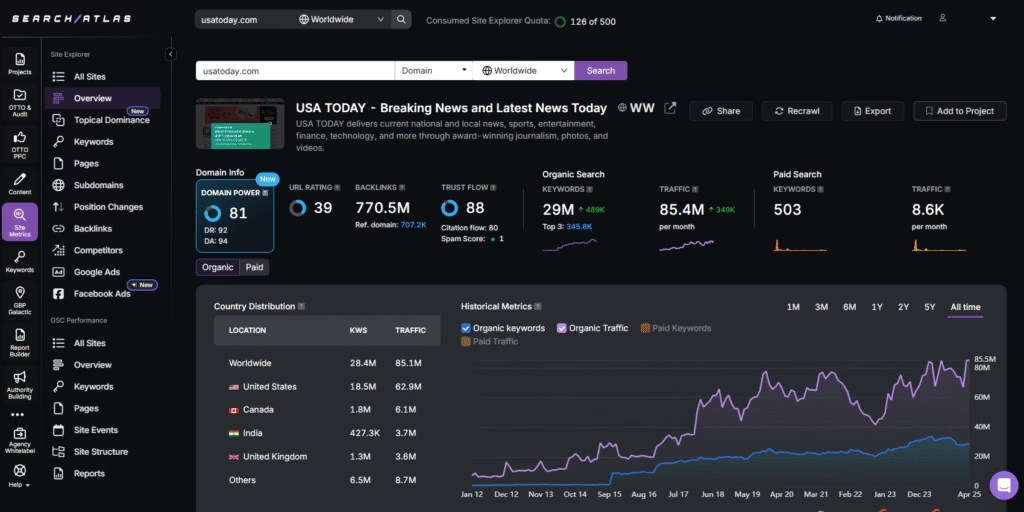
Use Search Atlas Site Explorer to measure the direct impact of press releases on website traffic. Identify which press release URLs generate visits, then analyze session duration, bounce rate, and engagement flow. Filter referral sources to track traffic from news outlets, media placements, and syndication partners. Confirm which press releases drive qualified traffic and which channels deliver the highest visibility.
Measure the Topical Authority Impact
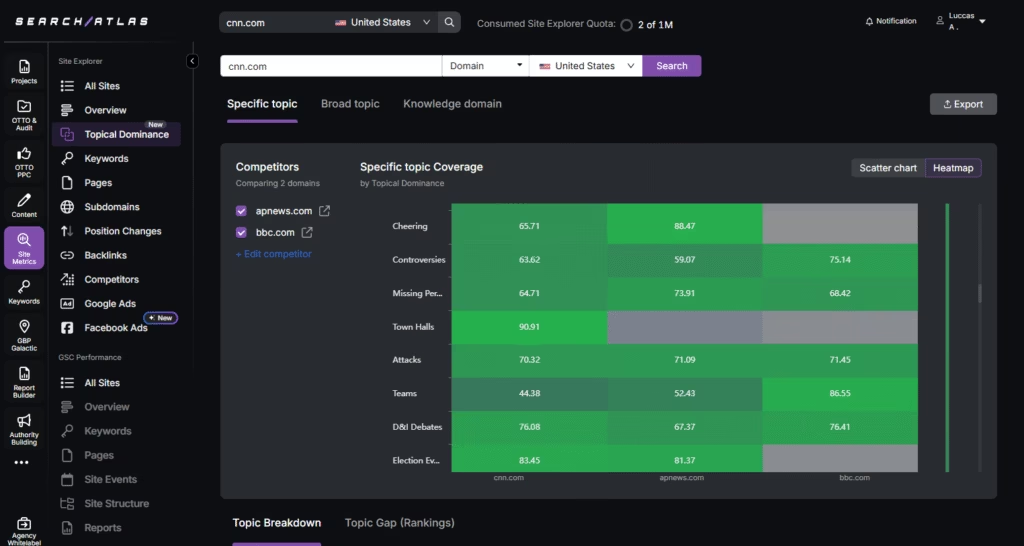
Use the Topical Dominance tool inside Site Explorer to evaluate how your press releases contribute to your site’s authority across key topics. Benchmark your domain against competitors to see how press release content strengthens coverage in specific knowledge areas. Select a topic level, then visualize your domain’s position using scatter or heatmap views.
Use Topic Breakdown and Topic Gap to reveal how press releases influence keyword clusters and theme coverage. Identify missing content areas where press releases can fill gaps and build relevance. Track your domain’s authority growth over time by comparing scores before and after key press release campaigns. Export reports to document how strategic press distribution advances topical leadership.
Build Performance Reports with Report Builder and GSC
Use Report Builder integrated with Google Search Console (GSC) to track how press releases perform in organic search. Build custom dashboards to display impressions, clicks, CTR, and keyword rankings tied to each press release URL. Automate SEO reports for clients and teams to maintain campaign visibility. Use these reports to validate the SEO impact of press releases and guide future distribution strategies.
What’s the Best Way to Track Press Releases?
Effective tracking turns every press release into a measurable asset. Clear data reveals what drives results, where to focus efforts, and how to refine future campaigns. Without simple tracking, valuable insights go to waste and opportunities slip away.
Search Atlas centralizes everything, including status updates, published links, and media coverage in one dashboard. Use Site Explorer, Topical Dominance, and Report Builder to track changes on your website, measure topical authority, and generate full performance reports.
Start tracking smarter. Try Search Atlas for free today!









